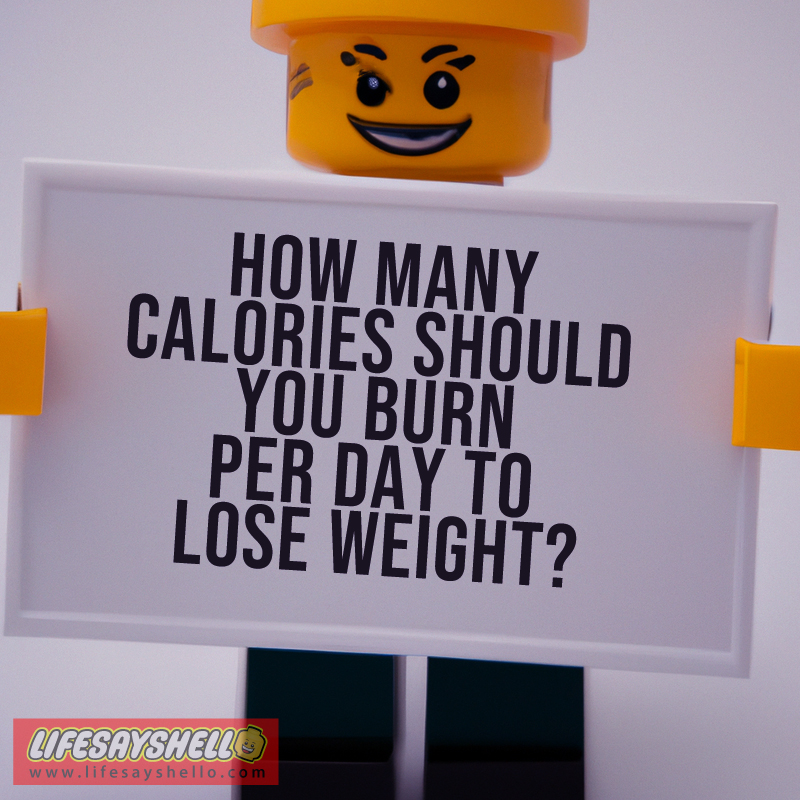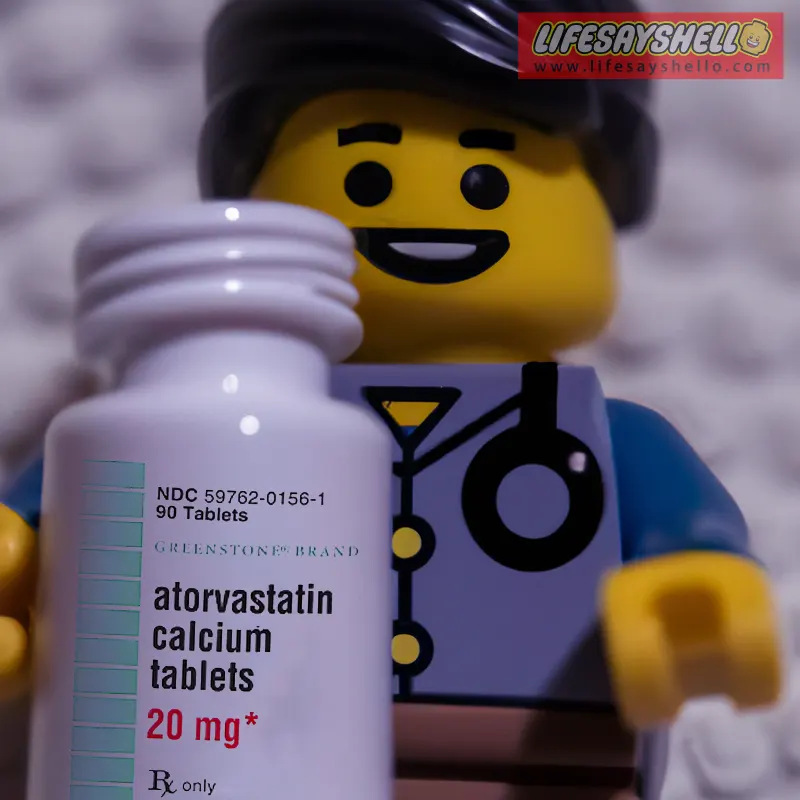How Many Calories Should You Burn Per Day to Lose Weight?

Are you trying to lose weight but not sure how many calories you should be burning each day? When it comes to weight loss, burning more calories than you consume is key. But with factors like age, gender, and activity level impacting your metabolism and calorie burn, how do you determine the right daily calorie deficit for you?
In this in-depth guide, we’ll break down how your age, sex, and lifestyle affect how many calories you should aim to torch each day to lose weight safely and effectively. Read on to learn how to create the optimal daily calorie deficit tailored to your unique needs and goals.
Why Calories Burned Matters for Weight Loss
When you're trying to slim down, the phrase "calories in, calories out" gets thrown around a lot. This concept refers to the balance between the calories you consume through food and drink and the calories you burn through basic functioning and physical activity.
To lose weight, you need to tip this scale by creating a calorie deficit, meaning you burn more calories than you eat. Just how much of a deficit you need to lose weight comes down to your body's unique calorie needs and burn rate. On average, cutting about 500-1000 calories from your maintenance level per day will result in about 1-2 pounds of weight loss per week.
But before you can create a healthy deficit, you first need to understand approximately how many calories you burn on an average day. This can vary significantly based on factors like your:
- Age
- Biological sex
- Height and weight
- Activity level
- Muscle mass percentage
- Any medical conditions
Understanding how these factors impact your metabolism and calorie burn will allow you to calculate a safe, sustainable calorie deficit tailored to your needs. Keep reading to learn how your age, sex, and activity levels influence daily calorie burn.
Age Impacts Your Metabolic Rate and Calorie Burn
Your age plays a key role in determining how many calories your body burns at rest and during activity. Why? Because your metabolism slows down naturally as you get older.
After peaking around age 20, your basal metabolic rate (BMR), or the calories you burn just to keep your body functioning, declines by about 2-3% per decade. This means the older you get, the fewer calories you'll burn just going about your usual daily activities.
Some key age-related shifts in calorie burn include:
Calories Burned by Average Adults at Rest
Age 20
- Men: 2,020 calories
- Women: 1,559 calories
Age 30
- Men: 1,964 calories
- Women: 1,516 calories
Age 40
- Men: 1,907 calories
- Women: 1,473 calories
Age 50
- Men: 1,850 calories
- Women: 1,429 calories
Age 60
- Men: 1,793 calories
- Women: 1,386 calories
Age 70
- Men: 1,737 calories
- Women: 1,343 calories
As you can see, an average man burns around 283 fewer calories at rest by age 70 compared to age 20. For women, this decrease is even greater at around 216 calories.
This age-related decline in metabolism means you'll need to adjust your calorie deficit as you get older to account for your changing calorie burn. You may need to create a slightly smaller deficit at age 50 compared to age 30 to lose weight safely.
Physical Activity and Calorie Burn by Age
Your decreasing metabolic rate isn't the only age-related shift that impacts calorie burn. Your ability to be physically active and build calorie-torching muscle also declines with age.
After age 30, adults lose around 3-5% of their muscle mass per decade. Less muscle means a lower daily calorie burn. Your aerobic capacity and VO2 max, or the maximum amount of oxygen your body can use during exercise, also starts decreasing around age 30.
This makes physical activity feel harder the older you get. Your endurance declines, meaning you fatigue faster and can't work out as long or as intensely. This leads to fewer calories burned during exercise.
While you can't stop the aging process, staying active can significantly slow the decline in muscle mass, VO2 max, and calorie burn. Adding resistance training is especially important to maintain and build calorie-burning lean muscle as you age.
The takeaway? Account for your declining calorie burn by gradually adjusting your deficit downwards as you get older. Staying active will allow you to maintain a stronger metabolism and torch more calories.
Biological Sex Differences Impact Calorie Needs
The average man needs around 600 more calories per day than the average woman. This difference comes down to key metabolic distinctions between biological males and females.
More Muscle Mass in Men
On average, men have more lean muscle mass than women. Muscle tissue burns about 6 calories per pound per day, while fat only burns 2 calories. So the more muscle you have, the more calories you'll scorch.
Men also find it easier than women to build muscle due to having higher testosterone levels. The combination of naturally more muscle and an easier time building muscle translates to men burning more daily calories than women.
Higher Metabolic Rate in Men
Thanks to greater muscle mass and higher testosterone, men tend to have faster metabolisms than women. Your metabolic rate is the number of calories your body burns for energy over a set time period.
Several studies show that men have metabolisms that are around 5-10% faster than women, even when adjusted for differences in body size and composition. This means they burn more calories performing the same activities.
Due to these metabolic distinctions, the average calorie needs for men and women differ:
Women
- Ages 19-30: 1,800-2,400 calories/day
- Ages 31-60: 1,600-2,200 calories/day
- Age 60+: 1,600-2,000 calories/day
Men
- Ages 19-30: 2,400-3,000 calories/day
- Ages 31-60: 2,200-3,000 calories/day
- Age 60+: 2,000-2,600 calories/day
To sum up, biological sex impacts your daily calorie burn and needs. Men burn more at rest and during exercise.
But metabolism varies widely within each sex too. A petite inactive woman may burn fewer calories than a very active, fit woman who strength trains regularly and has more muscle mass.
While these calorie burn differences between men and women exist on average, focus on your individual activity levels, body composition, and metabolic markers when determining your needs. Don't assume you burn a certain amount just because of your sex.
Your Activity Level Directly Impacts Calorie Burn
The more active you are, the more calories your body needs to fuel itself on a daily basis. Exercise and other physical activity boosts your metabolic rate and calorie burn in two key ways:
The Afterburn Effect
Vigorous exercise causes an oxygen deficit and excess post-exercise oxygen consumption (EPOC), which is also called the afterburn effect.
This effect results in an increased metabolic rate that can last anywhere from 15 minutes to 48 hours after working out as your body restores physiological systems and replenishes glucose and oxygen stores. This means you continue burning extra calories even after you finish exercising.
Higher intensity exercise like HIIT training produces the greatest afterburn. But all activity, even just household chores and gardening, can give your metabolism a slight boost.
Building Muscle
Any form of exercise, especially strength training, causes small tears in your muscle fibers. Your body then repairs these tears by synthesizing new muscle protein.
This muscle protein synthesis bumps up your resting metabolism as you build more calorie-burning lean muscle mass. Even an extra pound burns up to 50 extra calories per day.
In addition, each pound of muscle you build increases your total daily calorie burn a little more during workouts and other activities. The cumulative effect of building muscle is a metabolism that's burning more calories 24/7.
Here's how daily calorie needs rise with increased activity according to age and sex:
Calorie Needs for Active Females
Ages 4-8
- Sedentary: 1,200-1,400 calories
- Moderately Active: 1,400-1,600 calories
- Active: 1,400-1,800 calories
Ages 9-13
- Sedentary: 1,400-1,600 calories
- Moderately Active: 1,600-2,000 calories
- Active: 1,800-2,200 calories
Ages 14-18
- Sedentary: 1,800 calories
- Moderately Active: 2,000 calories
- Active: 2,400 calories
Ages 19-30
- Sedentary: 1,800-2,000 calories
- Moderately Active: 2,000-2,400 calories
- Active: 2,400-2,800 calories
Ages 31-50
- Sedentary: 1,800 calories
- Moderately Active: 2,000 calories
- Active: 2,200-2,600 calories
Age 50+
- Sedentary: 1,600 calories
- Moderately Active: 1,800 calories
- Active: 2,000 calories
Calorie Needs for Active Males
Ages 4-8
- Sedentary: 1,400-1,600 calories
- Moderately Active: 1,600-2,000 calories
- Active: 1,800-2,200 calories
Ages 9-13
- Sedentary: 1,800-2,200 calories
- Moderately Active: 2,000-2,600 calories
- Active: 2,400-2,800 calories
Ages 14-18
- Sedentary: 2,200-2,800 calories
- Moderately Active: 2,800-3,200 calories
- Active: 3,000-4,000 calories
Ages 19-30
- Sedentary: 2,400-2,800 calories
- Moderately Active: 2,600-3,000 calories
- Active: 3,000-3,200 calories
Ages 31-50
- Sedentary: 2,200-2,400 calories
- Moderately Active: 2,400-2,800 calories
- Active: 2,800-3,000 calories
Age 50+
- Sedentary: 2,000-2,200 calories
- Moderately Active: 2,200-2,400 calories
- Active: 2,400-2,800 calories
Keep in mind these are just general estimates. Tracking your calorie intake and weight changes for a few weeks can help dial in your actual maintenance calories based on your unique activity levels and metabolism.
Key Takeaways for Determining Calorie Deficit
When creating your calorie deficit for weight loss, keep these key calorie burn factors in mind:
Metabolism slows with age - You'll likely need to gradually decrease your deficit as you get older.
Men burn more calories - Biological differences mean men can usually sustain a larger deficit. Don't compare yourself to someone of the opposite sex.
Activity boosts calorie burn - Stay active with a mix of cardio and strength training to maximize calories burned.
Start with a 500-calorie deficit - Cutting 500 calories from your maintenance is a safe starting point for 1 pound lost per week.
Adjust based on changes - Weigh yourself weekly and adjust your deficit up or down by 100-200 calories depending on your rate of weight loss.
Eat enough nutrients - Don't slash calories extremely low or neglect nutrition as this causes muscle loss and metabolic slowdown.
The more you understand your unique calorie burn and needs, the easier it'll be to create an optimal deficit tailored just for you and your fitness goals. Patience and consistency are key - stick with a moderate calorie deficit, stay active, and the weight will come off at a safe, sustainable pace.
The Bottom Line
Calculating how many calories you should aim to burn each day for weight loss isn't a one-size-fits-all equation. Factors like your age, biological sex, and activity levels all impact the number you should target.
Start by using the estimates in this guide based on your demographic stats. Then monitor your rate of weight loss and adjust your deficit up or down as needed. For most people, burning around 500 calories more than you eat each day is a healthy starting point.
Remember that you shouldn't rely on just burning calories to lose weight. Combining calorie deficit with proper nutrition, sleep, stress management, and an active lifestyle is key for long-term success and overall health.
What's your experience been with trying to determine an optimal calorie deficit? We'd love to hear your thoughts and tips in the comments!




Comments